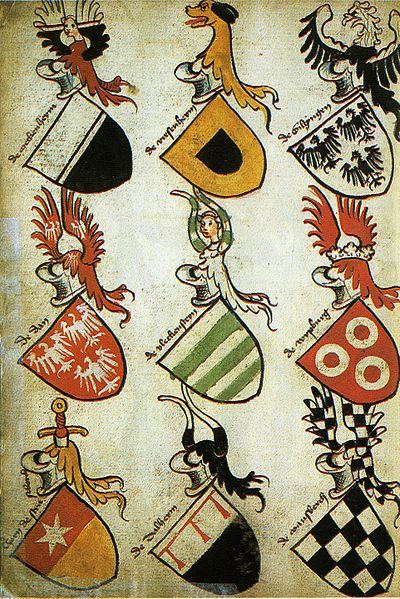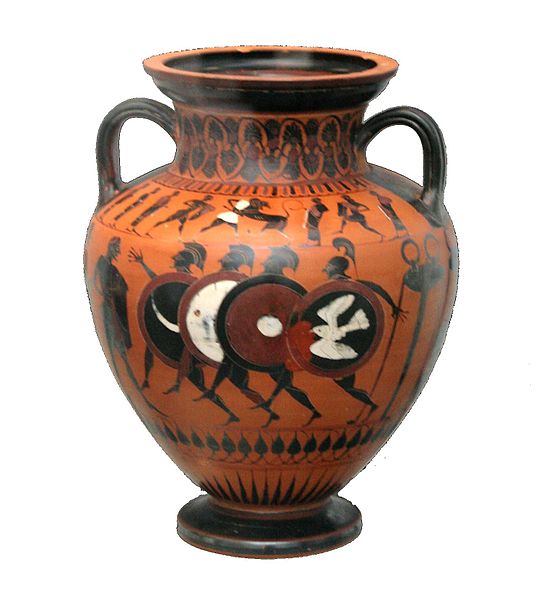A saltire, also called Saint Andrew's Cross or the crux decussata, is a heraldic symbol in the form of a diagonal cross. The word comes from the Middle French sautoir, Medieval Latin saltatoria ("stirrup").
Coin of Theodosius II (425–429), showing the emperor with globus cruciger and with the same vexillum
Saint Andrew martyred on a decussate cross (miniature from an East Anglian missal, c. 1320)
Quarterly 1st & 4th: Barry of six [seven] vair and gules; 2nd & 3rd: Gules, a saltire vair (Henry Beaumont of Devon, d.1591)
Papal coat of arms for Pope Innocent VIII with the Keys of Peter saltirewise (Wernigerode Armorial, c. 1490)
Heraldry is a discipline relating to the design, display and study of armorial bearings, as well as related disciplines, such as vexillology, together with the study of ceremony, rank and pedigree. Armory, the best-known branch of heraldry, concerns the design and transmission of the heraldic achievement. The achievement, or armorial bearings usually includes a coat of arms on a shield, helmet and crest, together with any accompanying devices, such as supporters, badges, heraldic banners and mottoes.
The German Hyghalmen Roll was made in the late 15th century and illustrates the German practice of repeating themes from the arms in the crest. (See Roll of arms).
Reverse of the Narmer Palette, circa 3100 BC. The top row depicts four men carrying standards. Directly above them is a serekh containing the name of the king, Narmer.
Fresco depicting a shield of a type common in Mycenaean Greece.
Vase with Greek soldiers in armor, circa 550 BC.



![Quarterly 1st & 4th: Barry of six [seven] vair and gules; 2nd & 3rd: Gules, a saltire vair (Henry Beaumont of Devon, d.1591)](https://upload.wikimedia.org/wikipedia/commons/thumb/a/a6/BeaumontWillingtonArmsGittishamDevon.JPG/567px-BeaumontWillingtonArmsGittishamDevon.JPG)




